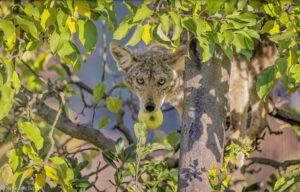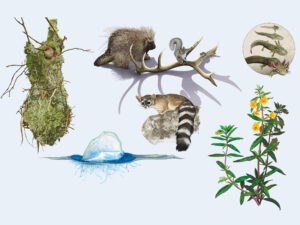Black bears, Ursus americanus, are found in many forested regions of California. In the Sierra Nevada they occur in all forests down to about 1,000 feet. In the northwest part of the state, they may even roam beaches that border the coastal forests. In the Bay Area, black bears are present, but not commonly observed, in forested regions of Sonoma County, which is the southern extent of the black bear’s range along the coast. I have several friends in rural Sonoma who each live within a black bear’s territory, and they report seeing a bear every week or two, on average. Black bears are also present in the forested areas of the Inner Coast range, which extends north from the Transverse Range to the Diablo Range east of San Jose.
There have been recent reports of an individual bear spotted near Skyline Boulevard on the Peninsula. But a species’ range and occasional sightings of an individual are two different things. Range refers to particular geographic areas normally inhabited by a species. Black bears, being large opportunistic mammals, need lots of land to find sufficient food to survive and reproduce. So roaming is a common behavior. One can only speculate as to what route a bear might have taken to get to Skyline. Unlike mountain lions, stealthy and cryptically colored, black bears stick out like, well, big black bears. We can only say that if populations are viable in surrounding areas and there’s food and a safe way to get to a particular location, then sooner or later a bear will show up.
Many experts believe that the southern limit of the black bear’s historic coastal range was the forested regions of Inverness Ridge and Mount Tamalpais, although one shouldn’t rule out the possibility that the black bear became more abundant as grizzlies were exterminated. (The grizzly bear, Ursus arctos, used to be common throughout the state but has long been extinct here. The last known California grizzly was killed in Tulare County in 1922.) Today the vast open grasslands of the Sonoma-Marin border isolate the forests of Marin from those of Sonoma and Mendocino. This cattle and sheep ranch land barrier would most likely restrict any southerly recolonization by black bears to their former range in Marin. Areas like Point Reyes and the Mount Tam watershed do offer ample forested open space, and human-assisted reintroduction of black bears there is a tempting idea. However, it would probably not be prudent, given that the surrounding areas are heavily populated and bear-human encounters would be far too common for the best welfare of the bears.




